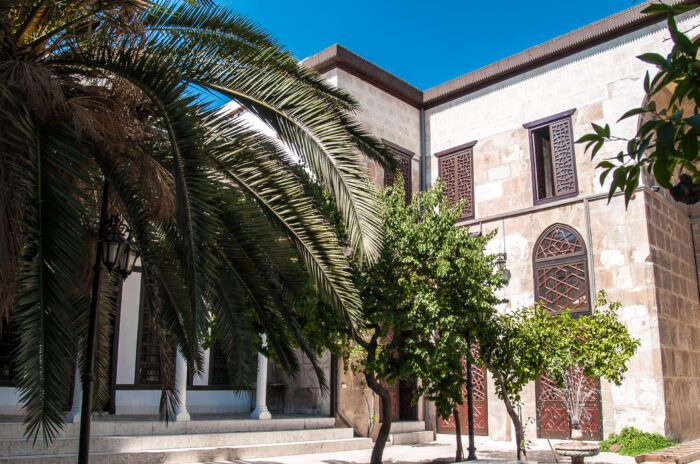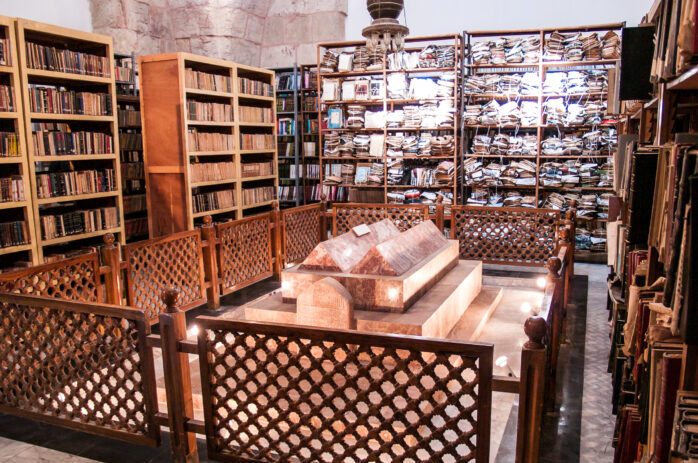Al-Madrasa al-Aadiliyeh in Damascus: A Hidden Jewel of Ayyubid Architecture: Tucked quietly in the heart of Old Damascus, just a short walk from the famed Umayyad Mosque, stands one of the city’s most elegant yet lesser-known historical treasures: Al-Madrasa al-Aadiliyeh. This ancient religious and educational complex is not only a masterpiece of Ayyubid architecture but also a peaceful sanctuary steeped in scholarly and spiritual history.
For travelers who want to dive deeper into the fabric of Damascus beyond the bustling markets and famous mosques, al-Madrasa al-Aadiliyeh offers a serene and profound experience. Here’s everything you need to know before visiting.
Quick Facts: Al-Madrasa al-Aadiliyeh
| Feature | Info |
|---|---|
| Location | Damascus, Syria |
| Type | Medieval Islamic madrasa (school) & mausoleum |
| Founded | Early 13th century (Ayyubid era) |
| Founder | Al-Adil I, brother of Salah al-Din al-Ayyubi (Saladin) |
| Historical Role | Center for Islamic learning, Quranic studies, and burial site |
| Architecture | Ayyubid style, geometric stonework, domed mausoleum |
| Special Feature | Combines religious education with funerary architecture |
| Condition | Preserved as a historical landmark |
| Current Use | Cultural and historical site |
| Best Time to Visit | Year-round; located in Damascus Old City |
What is Al-Madrasa al-Aadiliyeh?

Al-Madrasa al-Aadiliyeh (Arabic: المدرسة العادلية) is a medieval Islamic madrasa (school) built during the Ayyubid era in the early 13th century. It was commissioned by Al-Adil I, brother of the legendary Muslim leader Salah al-Din al-Ayyubi (Saladin), after whom the madrasa is named.
Serving both as a center of Islamic learning and a mausoleum, this site is considered one of the finest examples of early Ayyubid architecture in Syria. While modest in size, it showcases a harmony of geometric design, spirituality, and historical depth.
Historical Background
Built in the Age of Scholarship

The madrasa was established around 1215 AD, during a period when Damascus was a thriving center for religious scholarship, science, and architecture. The Ayyubid dynasty, successors of Saladin, sought to promote Sunni Islam through the founding of educational institutions, and al-Madrasa al-Aadiliyeh was one of the earliest and most important among them.
A Symbol of Sunni Revival
At the time of its construction, Damascus was emerging from a period of religious tension. The Ayyubids emphasized Sunni orthodoxy, and institutions like this madrasa were part of their broader religious and political strategy. They served not only as schools but also as places for training judges (qadis), scholars, and imams who would go on to lead mosques and courts across the Islamic world.
The Founder: Al-Adil I
Al-Adil I (Sayf al-Din Abu Bakr) was a powerful and pragmatic leader. After Saladin’s death, he consolidated Ayyubid rule and established stability across Syria and Egypt. Though less well-known than his brother, al-Adil’s legacy includes numerous mosques, madrasas, and public works—al-Madrasa al-Aadiliyeh being one of the most enduring.
Architectural Features


Ayyubid Elegance in Stone
The architecture of al-Madrasa al-Aadiliyeh is a beautiful example of Damascene stone craftsmanship. Built primarily from alternating black and white basalt and limestone (ablaq style), the madrasa reflects a refined simplicity.
Notable Elements:
- Muqarnas Entrance: The entrance features a carved muqarnas (stalactite-style) half-dome—an intricate hallmark of Islamic architecture that gives the portal a grand yet inviting look.
- Central Courtyard: Like many Islamic buildings of its time, the madrasa centers around a peaceful courtyard, once filled with greenery and fountains.
- Prayer Hall: The prayer hall is crowned with a small dome and features a mihrab (niche) indicating the direction of Mecca. The prayer area is plain but elegant, designed to promote focus and humility.
- Tomb of al-Adil I: A domed chamber within the madrasa holds the tomb of its founder, marking it also as a mausoleum. This blend of sacred space and educational institution was typical in the Islamic world.
Calm and Humble Aesthetic
Unlike the grander Ottoman or Mamluk buildings in the city, al-Madrasa al-Aadiliyeh conveys a quiet elegance. It lacks overwhelming ornamentation, instead relying on balance, proportion, and harmony—values that matched the educational and spiritual purpose of the madrasa.
Location and How to Visit

Central and Accessible
Al-Madrasa al-Aadiliyeh is located in the Old City of Damascus, just southeast of the Umayyad Mosque and very close to Suq al-Buzuriyah and the Al-Azem Palace.
- Address: Near Bab al-Barid Street, Old Damascus
- Admission: Usually free, or a symbolic entrance fee (subject to change)
- Opening hours: Morning to late afternoon, but local guidance is helpful
Best Way to Reach It
If you are already exploring the Old City, reaching the madrasa is easy on foot. Most guided walking tours of the area include a stop here, especially those focusing on Islamic history or Ayyubid architecture.
What to Expect During Your Visit
A Quiet Historical Escape

While not as crowded as other sites in the area, al-Madrasa al-Aadiliyeh is often overlooked, which can make your visit feel all the more personal. The site exudes calm, with few visitors and a serene atmosphere—ideal for contemplation or photography.
Modest Yet Meaningful Exhibits
Some rooms may be empty or under light restoration, but others might house small exhibits on Islamic education or the history of the madrasa. Always ask if there are temporary exhibitions or guided insights available on-site.
Combine It With Nearby Attractions
Due to its central location, the madrasa is best visited in combination with:
- Umayyad Mosque
- Azem Palace
- Suq al-Buzuriyah
- Al-Bimaristan al-Nuri
- Madrasa al-Zahiriyah (another historic madrasa with a library)
You could comfortably visit all these sites in half a day.
Why Visit Al-Madrasa al-Aadiliyeh?
For Architecture Lovers
Those fascinated by Islamic architecture, especially the Ayyubid style, will appreciate the structure’s purity and symmetry. It provides an excellent contrast to more flamboyant Ottoman-era buildings.
For History Enthusiasts
The madrasa offers a window into an era of religious, political, and intellectual transformation in the Islamic world. Understanding how madrasas functioned helps contextualize Islamic societies of the medieval period.
For Spiritual Seekers
There’s something deeply peaceful about al-Madrasa al-Aadiliyeh. Whether you’re religious or not, its atmosphere encourages introspection. The presence of a revered tomb, the simple prayer hall, and the echo of centuries of learning lend the place a powerful stillness.
Tips for Visitors
- Dress respectfully: As with all religious sites in Syria, modest attire is recommended.
- Hire a guide: A local guide or scholar can provide historical context that brings the visit to life.
- Visit in the morning: For better light and quieter surroundings.
- Ask permission before photography: Some caretakers may prefer limited photography inside the tomb area.
Is It Safe to Visit?
As of recent years, parts of Damascus have returned to relative calm, especially the Old City. However, it’s essential to check current travel advisories and go with a trusted local guide or travel agency familiar with the area.
Final Thoughts
Al-Madrasa al-Aadiliyeh is not just an architectural site—it is a piece of the intellectual and spiritual soul of Damascus. While its walls may no longer echo with the debates of scholars or the recitation of students, they continue to whisper stories of a time when Damascus was one of the world’s leading centers of learning.
Whether you’re an architecture lover, a history buff, or simply a curious traveler, don’t miss this subtle but powerful gem. In a city filled with grandeur and chaos, al-Madrasa al-Aadiliyeh offers something different: quiet wisdom etched in stone.
Finally.. If you have any questions, please contact us. To explore further, visit our Facebook Syria collection for rare images and cultural highlights.
Sources & References:
UNESCO – World Heritage Centre: https://whc.unesco.org
Archnet – Architecture & Heritage Database: https://www.archnet.org
World History Encyclopedia: https://www.worldhistory.org
Syrian Heritage Archive Project: https://syrian-heritage.org
Global Encyclopedia: Wikipedia



